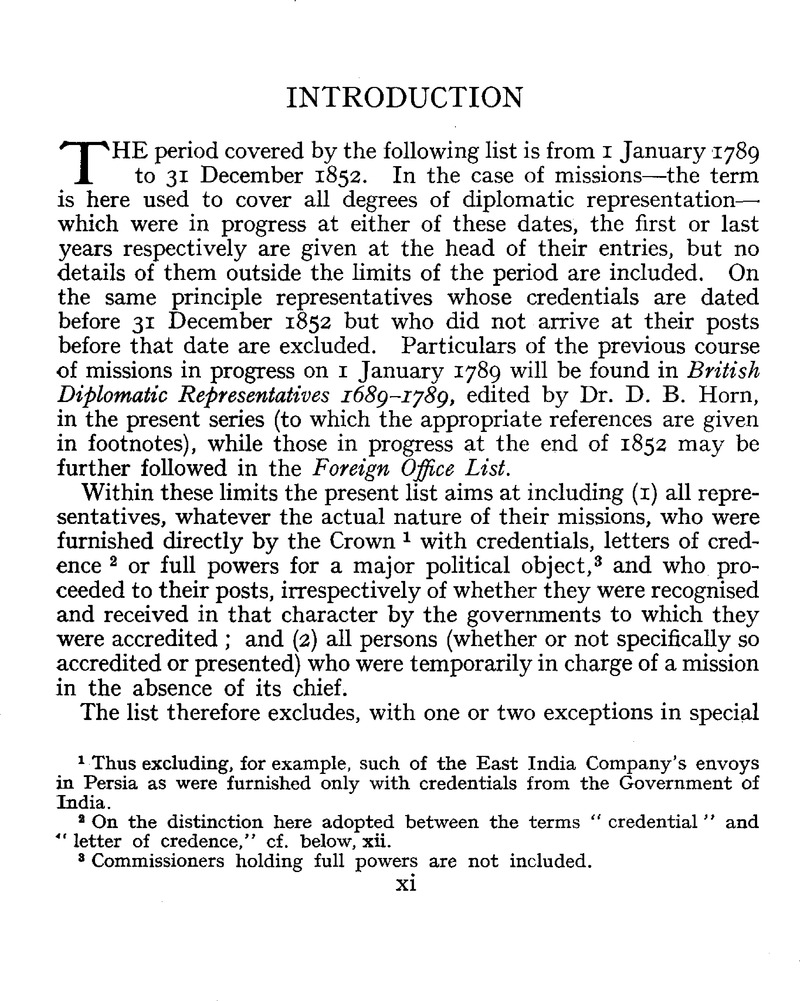No CrossRef data available.
Article contents
Abstract

- Type
- Introduction
- Information
- Copyright
- Copyright © Royal Historical Society 1934
References
page xi note 1 Thus excluding, for example, such of the East India Company's envoys in Persia as were furnished only with credentials from the Government of India.
page xi note 2 On the distinction here adopted between the terms “6 credential ” and “ letter of credence,” cf. below, xii.
page xi note 3 Commissioners holding full powers are not included.
page xii note 1 The principal exception is the representatives at Rome, none of whom was furnished with credentials to the Pope, but who were in reality diplomatic agents and therefore seemed to deserve inclusion.
page xii note 2 Except in the case of a chargé d'affaires being promoted minister at the same court with no break in residence, an exception necessitated by the use of two types in the list.
page xii note 3 Cf. below, xiv.
page xii note 4 Cf. below, 60.
page xiv note 1 In cases where it has not been possible to determine an exact date, the terms “on or before” and “on or after” mean that the event referred to took place on the date mentioned or a day or two earlier or later, while the expressions “ early,” “ mid ” and “ late ” applied to a month should be understood to mean the periods between its first and tenth, eleventh and twentieth, and twenty-first and last days.
page xv note 1 With two exceptions, namely, Macartney's embassy to China in 1793, for which there is no correspondence in the Foreign Office records, and the facts of which have been drawn from the semi-official Account by Sir George Staunton, who accompanied Macartney ; and à Court's mission to the Barbary States in 1813, the records of which are preserved among the Colonial Office records.
page xv note 2 Occasional exceptions to this are mentioned in footnotes. The details of Garter missions are chiefly drawn from the volume British Orders : Garter 1825–1869 (F.O. 83/943), which contains the records of these missions.




